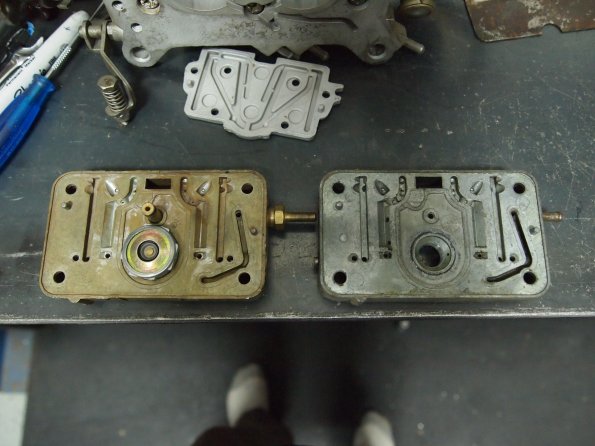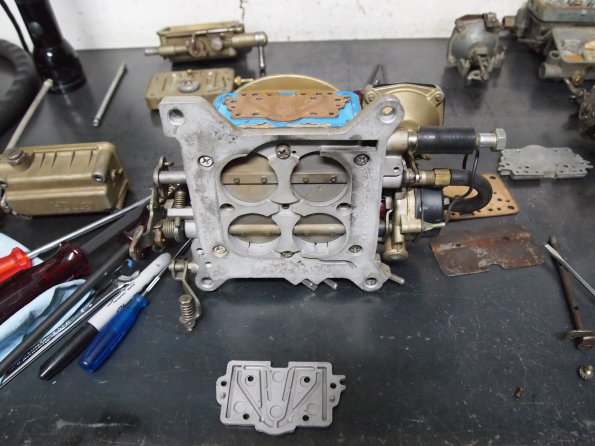Keeper
Active Member
Okay a while ago I had pickup up a used Holley 4160 from the local classifieds. The guy I bought it from told me he had purchased it, "Messed with it a bit" but then did not want to "fuss with it anymore" to get it running right, and bought an Edelbrock instead.
Anyway
Its a Holley 4160 600 vacuum secondary. The list number is 8004, from what I can find this was for a 75-76 Olds v8. Its also supposedly a "smog carb"
Now the question. I have a rebuild kit for it and plan on cleaning it up. Anything I should keep an look out for? I did find out that the mixture screws are reversed on this carb. Everyone seems to think that this is not a good carb for any sort of performance, but how bad can it be? I mean, its a 600cfm Holley??
Oh yeah, anyone know the stock jets for this? I have seen anywhere from 68-74!!
Oh again:
sbc 350
9:1 comp ratio
Comp cams 262
700R4
Anyway
Its a Holley 4160 600 vacuum secondary. The list number is 8004, from what I can find this was for a 75-76 Olds v8. Its also supposedly a "smog carb"
Now the question. I have a rebuild kit for it and plan on cleaning it up. Anything I should keep an look out for? I did find out that the mixture screws are reversed on this carb. Everyone seems to think that this is not a good carb for any sort of performance, but how bad can it be? I mean, its a 600cfm Holley??
Oh yeah, anyone know the stock jets for this? I have seen anywhere from 68-74!!
Oh again:
sbc 350
9:1 comp ratio
Comp cams 262
700R4





